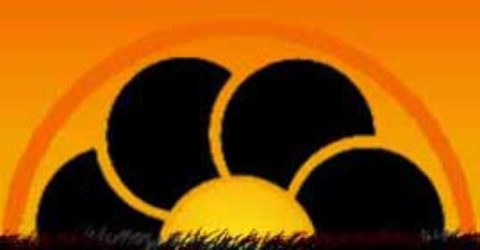The Way of the Sword
Kendo is the modern Japanese martial art of sword-fighting which is based on traditional Japanese swordsmanship, or Kenjutsu.
Kendo is a physically and mentally challenging martial arts that combines strong values with sport-like physical elements.
Practitioners of Kendo are called Kendoka, one who practices kendo or occasionally kenshi (swordsman).
There are estimates that about 6 million people world-wide practice Kendo, with approximately 4 million in Japan, 1 million in Korea, with more in Europe, North America, South America and other countries of Asia.
Kendo is a way to discipline the human character through the application of the principles of the katana.
Purpose
Molding the mind and body cultivates a vigorous spirit through correct and rigid training
Whilst striving for improvement in the art of Kendo we hold in esteem human courtesy, honor and sincerity
Whilst pursuing the cultivation of oneself.
Thus will one be able:
To love ones country and society;
To contribute to the development of culture;
To promote peace and prosperity among all peoples.
History
Since the earliest Samurai government in Japan, during the Kamakura period (1185-1333), sword fencing, together with horse riding and archery, were the main martial pursuits of the military clans. In this period Kendo developed.
Those swordsmen established schools of Kenjutsu (the ancestor of Kendo) which continued for centuries and which form the basis of Kendo practice today.
The names of the schools reflect the essence of the originator’s enlightenment.
Thus the Itto-ryu (Single sword school) indicates the founder’s illumination that all possible cuts with the sword emanate from and are contained in one original essential cut.
The Muto-ryu (swordless school) expresses the comprehension of the originator Yamaoka Tesshu, that “There is no sword outside the mind”.
The Munen Muso-ryu (No intent, no preconception) similarly expresses the understanding that the essence of Kenjutsu transcends the reflective thought process.
Kata
The formal Kendo exercises known as Kata were developed several centuries ago as Kenjutsu practice for warriors and are still studied today, albeit in a modified form.
The introduction of bamboo practice swords (shinai) and armour (bogu) to sword training is attributed to Naganuma Sirozaemon Kunisato during the Shotoku Era (1711-1715) who developed the use of bogu and established a training method using the shinai.
Use of the shinai and bogu made it possible to deliver strikes and thrusts with full force but without injuring one’s opponent. These advances, along with the development of set practice formats, set the foundations of modern Kendo.
Concepts such as mushin (empty mind) are borrowed from Zen Buddhism and are considered essential for the attainment of high-level Kendo.
Fudoshin (unmoving mind) is a conceptual attribute of the deity Fudo Myo-O, one of the five “Kings of Light” of Shingon Buddhism.
Fudoshin, implies that the Kendoka cannot be led astray by delusions of anger, doubt, fear or surprise arising from the opponent’s actions, collectively called the four Kendo sicknesses (shikai, lit. four admonitions).
Thus today it is possible to embark on a similar quest for spiritual enlightenment as followed by the samurai of old.
The Dai Nippon Butoku Kai was established in 1895 to solidify, promote, and standardize all martial disciplines and systems in Japan and changed the name of gekiken (Kyujitai, Shinjitai, hitting sword) to Kendo in 1920.
Kendo (along with other martial arts) was banned in Japan in 1946 by the occupying powers as part of “the removal and exclusion from public life of militaristic and ultra nationalistic persons” in response to the wartime militarization of martial arts instruction in Japan.
However, Kendo was allowed to return to the curriculum in 1950 (first as “shinai competition” (shinai kyogi) and then as Kendo from 1952).
Equipment and clothing
Kendo is practiced wearing a traditional Japanese style of clothing, protective armour (bogu) and using one or, less commonly, two shinai.
Equipment
The shinai is meant to represent a Japanese sword (katana) and is made up of four bamboo slats, which are held together by leather fittings. A modern variation of a shinai with carbon fiber reinforced resin slats is also used.
Kendoka also use hard wooden swords (bokuto) to practice kata.
Kendo employs strikes involving both one edge and the tip of the shinai or bokuto.
Protective armor is worn to protect specified target areas on the head, arms and body.
The head is protected by a stylized helmet, called men, with a metal grille (men-gane) to protect the face, a series of hard leather and fabric flaps (tsuki-dare) to protect the throat, and padded fabric flaps (men-dare) to protect the side of the neck and shoulders. The forearms, wrists, and hands are protected by long, thickly padded fabric gloves called kote. The torso is protected by a breastplate (do), while the waist and groin area is protected by the tare, consisting of three thick vertical fabric flaps.

